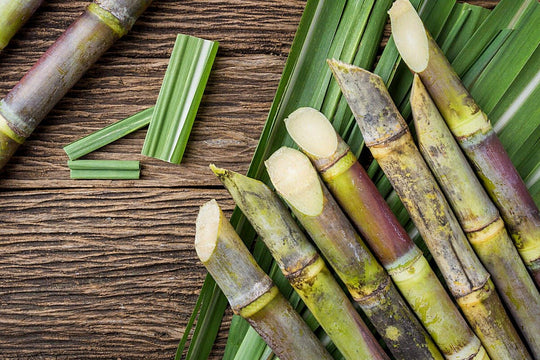Paper Straws and Containers Aren't Enough — Turn to Sugarcane Instead
Posted on September 06 2021,


Photo by Joseph Mucira
Did you know that, according to Greenpeace, about four billion trees are cut down every year to make paper? If this didn't alarm you before, then it should now.
Along with the growing popularity of paper food containers comes the ignorance of their harmful effects on the environment. Paper isn't totally bad; but while it's a start to a more eco-friendly lifestyle, it isn't enough. The good news? There happens to be a much better alternative.
The downsides of using paper food packaging
Paper is lightweight, easy to process, and generally safe. Above all, it’s biodegradable and recyclable. As the world faces a surge in contactless ways of getting food, paper packaging has likewise become the norm for restaurants to reduce plastic waste.
In time, people associated paper — whether parchment, kraft, or corrugated board — with everything sustainability. But while it does its job against plastic, the truth is that it comes with its fair share of drawbacks too. This is especially true for paper in food packaging. In fact, you might rethink using the latter altogether for the following reasons:
- Paper food packaging causes deforestation
Before they can sell paper, companies cut down thousands to millions of trees to produce it. It doesn’t help that according to the World Wildlife Fund, a significant amount of manufactured paper goes to the packaging sector. Fewer trees mean more habitats destroyed, increased greenhouse gases, more flooding… you know the deal. When you patronize products made from paper, you’re not just giving others the wrong idea that they’re safe to have around; but you’re also preventing the world from becoming the better place that it should be.
- Paper food packaging isn’t exactly durable

Photo by Anna Hill
- Paper food packaging takes more energy to prepare
Using a renewable material doesn’t mean paper food packaging is totally sustainable. The entire manufacturing process in itself already uses so much energy and non-recyclable water. It also emits shocking levels of carbon monoxide and sulfur dioxide, to name a few. Not to mention, paper — being heavier than plastic — requires more work to transport. This yields even greater carbon emissions. So although paper is generally eco-friendly as an end-product, the process to make it isn’t.
With that being said, if paper isn’t the answer, what should businesses and consumers in the food industry use instead?
Sugarcane bagasse — an alternative to paper packaging
To this, we say sugarcane. Precisely, its dry pulpy fiber known as bagasse that remains after the crop has been extracted for juice. At the end of this procedure, this waste material is either discarded or burnt as a source of fuel. Based on this alone, sugarcane bagasse is already a better alternative to paper, which uses actual trees. As a result, sugarcane bagasse produces commodities that have a small carbon footprint.
Lately, sugarcane bagasse has also been the holy grail of many food businesses for its eco-friendly packaging potential. For this reason, Econtainer Philippines launched to encourage more of those in the industry to choose it over other food packaging materials. In more detail, here’s why sugarcane bagasse packaging is simply better than plastic and paper ones.

- Sugarcane bagasse packaging is 100% biodegradable and compostable
While it only takes paper a few weeks, the plastic lining in paper containers and tableware will take months to years to decompose. More often than not, this only defeats the purpose of sustainability. On the contrary, sugarcane bagasse is 100% biodegradable and compostable. In fact, Econtainer food containers made from them can decompose in as fast as 45 days. They turn into a nutrient-rich fertilizer that’s toxic-free!
- Sugarcane bagasse packaging is water and oil resistant
Because of their lack of natural oil and waterproofing abilities, most paper food containers have high exposure to toxic contaminants. As earlier stated, this also makes them flimsy and less durable. This is why they still heavily rely on plastic or wax lining to be usable. On the other hand, sugarcane bagasse is resistant to water, oil, and grease. For drinks and food that come with sauce or soup, sugarcane bagasse makes for hassle-free packaging. That's even without the need for harmful synthetic chemicals!
- Sugarcane bagasse packaging is oven, microwave, and freezer-safe
Food packaging is only as good as how durable it is in handling different types of food. When they do this well enough, that’s more time, energy, and money saved. Sugarcane bagasse containers can take heat up to 250°C, making them oven- and microwave-safe. Reheating meals couldn’t be easier! Besides, they are freezer-safe for up to -15°C. You don’t need to worry about them or your food being damaged while kept in cold storage.

- Sugarcane bagasse packaging is hygienic and aesthetically pleasing
With sugarcane bagasse containers, there’s no need to bargain beauty for sustainability. That’s because they come with both! As the pulp is naturally white in color, it makes for food packaging that goes well with any food or drink. The same is true for brown sugarcane bagasse containers which have bamboo fiber in them. Furthermore, Econtainer Philippines practices a no-wash and no-reuse policy. Hence, our boxes, bowls, and trays are completely sanitary!
- Sugarcane bagasse packaging is sustainably made, hence the best value for your money
Whether you’re looking for eco options for your food business or simply out to make a difference in the world through how you eat, don’t settle on food containers that do more harm than good. Turn to those made from sugarcane bagasse instead!
About Econtainer Philippines
Econtainer Philippines is an internationally accredited wholesale supplier of food service disposables made from sugarcane bagasse. We offer eco-friendly, affordable, hygienic, and aesthetically pleasing plates, bowls, trays, and straws for businesses and personal use in the Philippines. Order or apply as a distributor now!

0 comments